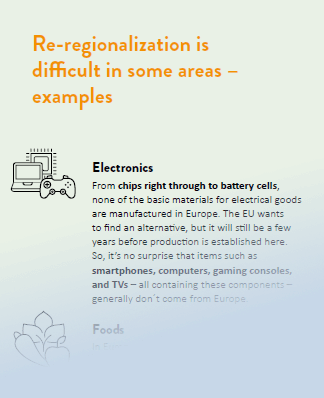Advantages of the regional supply chain
he advantages of a mainly regional supply chain are apparent: within the European Union there are no trade barriers, plenty of partner countries share the same currency, and some share the same language or culture. Personal collaboration is all the easier to organize, the nearer your suppliers are based. And it’s better for the environment if you don’t have to ship goods halfway around the world. Plus, the shorter the journey, the lower the risk of disruption. In turn, this brings more flexibility through faster lead times and lower inventory levels.
Cheap production is East Asia
One significant factor tipped the scales in shifting procurement more and more towards Asia over the last 15 years: costs. Production is simply cheaper in east Asia than it is in Europe. Unlike in the early days of globalization, the quality is appropriate; Asian suppliers have adapted to Western customers’ requirements, and transport is cheap and efficient.
Lack of production capacities in Europe
The fact is, though, that production capacity in Europe is sadly lacking. In many cases, businesses that are serious about re-regionalizing their supply chains have to first support the construction of manufacturing facilities, before they can procure on a large scale from their continent. As well as the advantages of a regional supplier relationship already mentioned, there is also
the boost in European value creation and new jobs that an increase in European production would bring. In the current recession whic may well lead to more unemployment yet, supply chain re-regionalization could create new opportunities.
You can find the entire article on the topic of “Re-regionalizing supply chains” in the free digital edition of our customer magazine “Sustainable Procurement – SHAPING THE FUTURE”.

Further contents of the article:
- How does the Corona challenge established connections?
- How does the return to the regional supply chain succeed?
- Which individual demands of different sectors lead to difficulties in re-regionalisation? (Examples: Elektronics, Foods, Personal body care, Consumer goods)
About the authors:
Rudolf Trettenbrein
Rudolf is the Managing Director at INVERTO in Vienna and advises customers on supply chain re-regionalization, as well as cost optimization in procurement and supply chain management. He has extensive experience in retail and in the consumer goods industry, within the European and international market.
Maja Ennemoser
Maja is a Consultant at INVERTO’s Munich office. She specializes in retail and the consumer goods industry.

